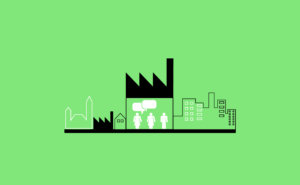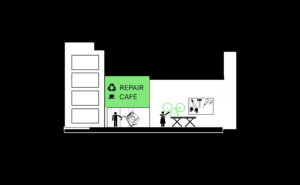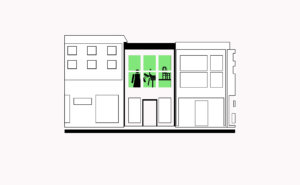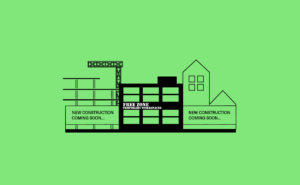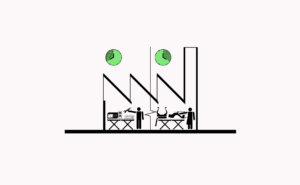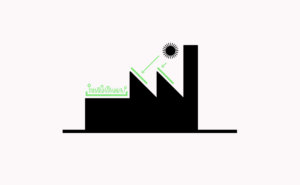
N.5 Local Collection Points of Segregated Waste
To ensure full recovery of waste streams, non-domestic waste collection points must be both easily accessible and well distributed across the city, into segregated waste streams to guarantee homogeneity, purity and maximise value and recovery potential.
[Context] Summarised simply; ‘waste makes cities / cities make waste’. Cities have the capacity to manage a vast amount of their waste, if the will and facilities are in place. Collection points have a vital role in being able to sort and distribute waste to relevant treatment plants. At a global scale, manufacturing and industrial areas produce large amounts of waste but also process a vast amount of materials. Waste collection services are the most costly part of the waste treatment chain and its organisation and provision generally is a responsibility of local governments. Waste collection systems are also highly dependent on the city fabric, the density and type of sorting facilities and the amount of pre-sorting of waste.
[Problem] Unless there is a clear strategy to match sources of waste and users of the wasted resource, the waste remains inaccessible and a cost to society. Cities have increasingly reduced their productive activities, reducing their ability to be able to process residual materials back into usable products. Opportunities to increase value out of waste and maximise high value recovery options start from an effective collection system. At the city scale, manufacturing activities are generally space-constrained with limited yard space that has to be used for both storage and segregation of waste, logistics and distribution. This reduces the incentives for manufacturers to segregate waste into homogeneous streams, unless there is a proven residual value for the material (such as metals). When this is combined with a lack of suitable R.7 Multi-Scalar Circular Infrastructure, the result is that a large part of waste in cities (particularly industrial waste) is poorly segregated, reducing chances of N.2 Re-use of Materials & Energy Flows. Waste management is also often involves a confusing mix of public and private actors. Municipalities are generally responsible for domestic waste collection but may contract the work to private businesses. Businesses (in general) often have private waste contractors, with the waste managed separately.
[forces] Current cross-contaminated waste, throwing waste into an unsorted bin, is challenging to recycle. Viable opportunities for reutilisation require not only access to the resource in its purest and most integral form, but also the scale to make waste recovery and transformation into a valuable resource financially viable business opportunity. Changing sorting habits at the business and consumer end will require extensive amounts of training and support while it will also involve forcing private waste management companies to change collection and treatment process. This could require ending contracts or costing more in waste collection. While industrial waste is a large and poorly managed resource with great potential, the challenge lies in capturing and sorting it at the source. Urban manufacturing is made up mainly of SMEs that produce small scale waste streams which creates a collection challenge. Existing industrial waste management is often coordinated by the private sector that are incentivised to sort the materials of commercial value.
[Solution] Provide practical solutions for managing waste that are easy for businesses to apply without resulting in an unnecessary burden or cost. Local segregated waste collection points could help to reduce occupying yard spaces. It also helps sorting waste to retain purity and reaching adequate scale for viable recovery options. This will require defining how to move waste from the business to the collection point and if this burden is the responsibility of the manufacturer or the public authority. Local collection points need to be distributed across manufacturing districts at a distance of around 2km radius from the company to reduce congestion and cost for businesses. In well industrial areas undergoing regeneration, define the location of critical local waste collection infrastructure at the planning stage. The space required will depend on the number of neighbouring activities and their waste streams. For example, an area with a large furniture sector would need to have collection points of wood and wood derived products. It is important that areas are adequately monitored to avoid issues of fly-tipping (dumping waste on the side of the road) and cross-contamination, something which can be done using sensor and robotic technologies. The R.3 Curator could be instrumental in facilitating exploitation of recovered waste, which may include collaboration with local testing and developing facilities but also identifying gaps in available R.7 Multi-scalar Circular Infrastructure. R.10 Place-based Financial Levers can be used for training while fines given for miss-use. Innovation can be driven around new uses of waste through R.11 Incentives for Research and Development, supported with start-up and incubating programmes.
[Contribution] Add contributions here.
